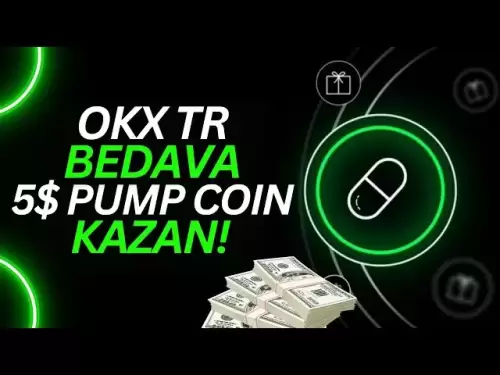-
 Bitcoin
Bitcoin $117700
0.64% -
 Ethereum
Ethereum $3766
1.44% -
 XRP
XRP $3.545
3.02% -
 Tether USDt
Tether USDt $1.000
0.00% -
 Solana
Solana $201.4
12.46% -
 BNB
BNB $766.0
2.28% -
 USDC
USDC $0.9999
0.01% -
 Dogecoin
Dogecoin $0.2720
2.37% -
 Cardano
Cardano $0.8942
5.70% -
 TRON
TRON $0.3135
0.55% -
 Hyperliquid
Hyperliquid $44.62
-2.41% -
 Stellar
Stellar $0.4757
1.39% -
 Sui
Sui $4.010
3.56% -
 Chainlink
Chainlink $19.59
2.25% -
 Hedera
Hedera $0.2701
-0.95% -
 Avalanche
Avalanche $25.68
3.18% -
 Bitcoin Cash
Bitcoin Cash $522.7
-2.05% -
 Shiba Inu
Shiba Inu $0.00001552
2.28% -
 Litecoin
Litecoin $116.1
-0.34% -
 UNUS SED LEO
UNUS SED LEO $8.991
0.01% -
 Toncoin
Toncoin $3.349
3.48% -
 Polkadot
Polkadot $4.504
1.83% -
 Uniswap
Uniswap $10.93
5.54% -
 Ethena USDe
Ethena USDe $1.001
-0.01% -
 Pepe
Pepe $0.00001440
4.56% -
 Monero
Monero $319.3
-0.87% -
 Bitget Token
Bitget Token $4.870
0.09% -
 Dai
Dai $0.9999
0.00% -
 Aave
Aave $321.6
0.20% -
 Bittensor
Bittensor $453.3
10.25%
What Is Anti-Money Laundering?
Anti-money laundering (AML) is crucial for preventing illegally obtained funds from entering the financial system and supporting criminal organizations.
Oct 19, 2024 at 04:41 am

What is Anti-Money Laundering (AML)?
Anti-money laundering (AML) refers to a set of laws, regulations, and practices designed to prevent and detect the illegal transfer or concealment of funds derived from criminal activities.
Importance of AML
AML is crucial for the following reasons:
- Protecting Financial Integrity: Prevents criminals from using legitimate financial institutions to launder ill-gotten gains.
- Combating Crime: Disrupts financial flows that support criminal organizations, reducing their ability to operate and finance illegal activities.
- Maintaining Economic Stability: Prevents contaminated funds from entering the financial system, which can destabilize markets and harm legitimate businesses.
- Upholding Rule of Law: Ensures the integrity of financial transactions and combats fraud, tax evasion, and other financial crimes.
Key Components of AML
AML involves several key components:
- Know Your Customer (KYC) and Customer Due Diligence (CDD): Requires financial institutions to verify the identity of customers and understand their financial activities.
- Transaction Monitoring: Detects suspicious transactions that may indicate money laundering or other financial crimes.
- Reporting: Suspicious transactions must be reported to appropriate authorities, such as the Financial Crimes Enforcement Network (FinCEN) in the US.
- Regulatory Compliance: Financial institutions must comply with AML regulations and guidelines set by government agencies.
- International Cooperation: AML efforts often involve collaboration between national and international authorities to track and prevent cross-border money laundering.
Benefits of Effective AML
- Protects Legitimate Businesses: Reduces the risk of financial institutions being used for illicit activities.
- Improves Customer Confidence: Creates a secure environment for customers, enhancing trust in the financial system.
- Enhances Financial Stability: Maintains the integrity of financial markets and reduces the risk of systemic crises.
- Supports Law Enforcement: Facilitates investigations into criminal activities and helps recover stolen funds.
- Deters Criminal Activity: Strong AML measures make it more difficult for criminals to launder money, reducing their incentives to engage in illicit activities.
Conclusion
Anti-money laundering is essential for maintaining the integrity of financial markets, combating crime, and protecting economic stability. Robust AML practices enable financial institutions to identify and mitigate money laundering risks, contribute to the rule of law, and enhance customer confidence.
Disclaimer:info@kdj.com
The information provided is not trading advice. kdj.com does not assume any responsibility for any investments made based on the information provided in this article. Cryptocurrencies are highly volatile and it is highly recommended that you invest with caution after thorough research!
If you believe that the content used on this website infringes your copyright, please contact us immediately (info@kdj.com) and we will delete it promptly.
- Cryptos, Meme Coins, Buy Now: Riding the Wave of Hype
- 2025-07-22 08:30:13
- Altcoins in July 2025: Trends, Insights, and a Few Wildcards
- 2025-07-22 08:50:13
- Yuan Stablecoin on Conflux: A New Era for Cryptocurrency?
- 2025-07-22 08:30:13
- Cosmos (ATOM) Network Upgrade Fuels Bullish Momentum, But Overbought Signals Emerge
- 2025-07-22 08:50:13
- Dogecoin, ROI, and the Rising Tide of Meme Coins: What's Next?
- 2025-07-22 08:55:13
- ACRED: Apollo's Tokenized Credit Fund Bridges Wall Street and DeFi
- 2025-07-22 08:55:13
Related knowledge

What is the difference between CeFi and DeFi?
Jul 22,2025 at 12:28am
Understanding CeFi and DeFiIn the world of cryptocurrency, CeFi (Centralized Finance) and DeFi (Decentralized Finance) represent two distinct financia...

What is the difference between a sidechain and a Layer 2?
Jul 20,2025 at 11:35pm
Understanding the Concept of SidechainsA sidechain is a separate blockchain that runs parallel to the main blockchain, typically the mainnet of a cryp...

What is the Inter-Blockchain Communication Protocol (IBC)?
Jul 19,2025 at 10:43am
Understanding the Inter-Blockchain Communication Protocol (IBC)The Inter-Blockchain Communication Protocol (IBC) is a cross-chain communication protoc...

How does sharding improve scalability?
Jul 20,2025 at 01:21am
Understanding Sharding in BlockchainSharding is a database partitioning technique that is increasingly being adopted in blockchain technology to enhan...

What is the "crypto trilemma" of scalability, security, and decentralization?
Jul 19,2025 at 06:28pm
Understanding the Concept of the Crypto TrilemmaThe crypto trilemma refers to the challenge of simultaneously achieving scalability, security, and dec...

What is a cliff and vesting schedule in tokenomics?
Jul 20,2025 at 10:28am
What Does a Cliff Mean in Tokenomics?In tokenomics, a cliff refers to a specific period during which token holders are not allowed to access or transf...

What is the difference between CeFi and DeFi?
Jul 22,2025 at 12:28am
Understanding CeFi and DeFiIn the world of cryptocurrency, CeFi (Centralized Finance) and DeFi (Decentralized Finance) represent two distinct financia...

What is the difference between a sidechain and a Layer 2?
Jul 20,2025 at 11:35pm
Understanding the Concept of SidechainsA sidechain is a separate blockchain that runs parallel to the main blockchain, typically the mainnet of a cryp...

What is the Inter-Blockchain Communication Protocol (IBC)?
Jul 19,2025 at 10:43am
Understanding the Inter-Blockchain Communication Protocol (IBC)The Inter-Blockchain Communication Protocol (IBC) is a cross-chain communication protoc...

How does sharding improve scalability?
Jul 20,2025 at 01:21am
Understanding Sharding in BlockchainSharding is a database partitioning technique that is increasingly being adopted in blockchain technology to enhan...

What is the "crypto trilemma" of scalability, security, and decentralization?
Jul 19,2025 at 06:28pm
Understanding the Concept of the Crypto TrilemmaThe crypto trilemma refers to the challenge of simultaneously achieving scalability, security, and dec...

What is a cliff and vesting schedule in tokenomics?
Jul 20,2025 at 10:28am
What Does a Cliff Mean in Tokenomics?In tokenomics, a cliff refers to a specific period during which token holders are not allowed to access or transf...
See all articles

























































































